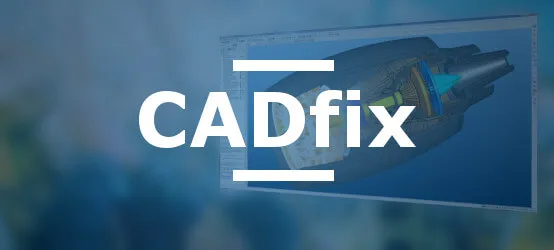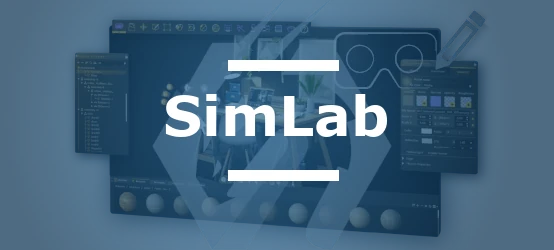Table of Contents
- Fundamentals of XGL format and its role in the CAD interoperability ecosystem
- Technical architecture of XGL format and advantages for 3D visualization
- Comparison between XGL and other interoperability formats: advantages and limitations
- Software solutions and practical workflows for XGL files management
- Industrial use cases and best practices for implementation
- FAQ on XGL interoperability
- Conclusion
In an increasingly digitized industrial environment, the smooth exchange of 3D data between different CAD systems represents a major technical challenge. The XGL format represents a specialized solution for the visualization and sharing of complex 3D models across various platforms. This guide explores how XGL fits into an effective CAD interoperability strategy, particularly in contexts where precise and lightweight visual representation of technical data is paramount.
Fundamentals of XGL format and its role in the CAD interoperability ecosystem
The XGL format (eXtensible Graphics Language) was developed to address a specific need in the CAD interoperability ecosystem: to provide a lightweight yet faithful representation of 3D models for visualization and integration with modern graphics technologies.
Origin and positioning of XGL in CAD interoperability
XGL originated from industrial needs for efficient visualization of complex CAD data. Initially developed as a visual representation format, it works primarily with triangular meshes (tessellation) rather than exact B-rep representations used by STEP or other standard exchange formats.
- Specialized format for 3D visualization of technical data
- Based on a tessellated representation of 3D models
- Compatible with OpenGL rendering technologies
- Designed for integration into lightweight visualization applications
The uniqueness of XGL lies in its ability to preserve assembly hierarchy while optimizing data for fast visualization. Unlike generalist exchange formats like STEP that prioritize geometric precision, XGL emphasizes rendering efficiency and file lightness.
XGL's place in a 3D data conversion strategy
XGL occupies a strategic position in the CAD interoperability ecosystem, complementary to the main exchange formats. It typically comes into play when visualization and visual sharing become priorities over exact geometric precision.
- Intermediate format in multi-CAD conversion chains
- Solution for creating lightweight visualizations from complex native models
- Alternative to proprietary visualization formats for third-party applications
- Support for visual representation in validation and review processes
In a global CAD interoperability strategy, XGL therefore constitutes an important link for workflows where rapid visualization and accessibility of 3D data are essential, while complementing more precise exchange formats like STEP for exact geometry.
Technical architecture of XGL format and advantages for 3D visualization
The XGL format presents a technical architecture that distinguishes it from other exchange formats and explains its particular effectiveness for visualizing complex CAD models.
Structure and XML syntax of the XGL format
The fundamental strength of XGL comes from its structure based on XML 1.0, which gives it several advantages:
- Human-readable text format and easily machine-analyzable
- Natural hierarchical structure that reflects that of CAD assemblies
- Tag-based referencing system that avoids data duplication
- Ability to store metadata and attributes alongside geometry
The XML syntax also allows the format to be extended to integrate new functionalities without compromising backward compatibility, a major advantage for the long-term technological evolution of CAD interoperability solutions.
3D data representation in XGL
XGL uses a visualization-optimized approach that focuses on the essential elements for efficient rendering:
- Triangular meshes to represent surfaces (tessellation)
- Vertex normals for realistic lighting rendering
- UV texture coordinates for texture application
- Object hierarchy preserving the structure of assemblies
- Color information and visual appearance of components
This visualization-oriented representation facilitates integration with modern 3D rendering technologies, particularly with OpenGL, while maintaining a reasonable file size even for complex assemblies.
ZGL format: the compressed version for optimizing performance
For particularly voluminous models, XGL offers a compressed variant called ZGL:
- Compression of XML data to drastically reduce file sizes
- Preservation of all the functionalities of the standard XGL format
- Improved loading and rendering performance for large assemblies
- Preferred option for network sharing or cloud-based collaboration
ZGL compression represents a major asset for companies managing complex assemblies, allowing for significant reduction in loading times and bandwidth consumption when sharing models.
Comparison between XGL and other interoperability formats: advantages and limitations
To determine when to use XGL in a CAD interoperability strategy, it is essential to understand its strengths and weaknesses compared to other standard formats on the market.
Comparative analysis of technical exchange formats
| Characteristic | XGL | STEP | JT | 3D PDF |
|---|---|---|---|---|
| Representation type | Tessellation (mesh) | Exact B-rep | Hybrid (B-rep + mesh) | Hybrid (U3D/PRC) |
| Geometric precision | Limited (depends on tessellation) | High | Variable (configurable) | Variable |
| File size | Light to medium | Often voluminous | Light (compressed) | Medium to light |
| PMI support | Not supported | Complete | Complete | Complete |
| Interpretation complexity | Low | High | Medium | Medium |
| Standardization | Semi-open format | ISO standard | ISO standard | ISO standard |
| Main orientation | Visualization | Technical exchange | Visualization and exchange | Technical communication |
This comparison highlights the specialization of the XGL format for visualization workflows, complementing formats more oriented towards geometric precision like STEP.
Distinctive advantages of the XGL format
XGL presents several assets that make it particularly relevant in certain CAD interoperability contexts:
- Simplified integration with OpenGL rendering engines
- Easily analyzable and extensible XML structure
- Optimized visualization performance even for large assemblies
- Preservation of complex assembly hierarchies
- Effective compromise between visual quality and file size
- Native management of visual attributes (colors, textures)
These advantages make XGL a format of choice for lightweight visualization applications, collaborative design reviews, and integration into third-party applications.
Limitations to consider in an interoperability strategy
Like any specialized format, XGL presents certain limitations that should be taken into account:
- Loss of geometric precision due to tessellation
- No support for PMI (Product Manufacturing Information)
- Lack of advanced geometric editing capabilities
- Impossibility to define non-uniform scaling
- Mandatory conversion to triangles, even for flat surfaces
- Lack of support for certain advanced CAD attributes
These limitations explain why XGL is generally part of a broader CAD interoperability strategy, complementing other formats such as STEP for exact geometry exchange or JT for cases requiring both visualization and precision.
Software solutions and practical workflows for XGL files management
Effective exploitation of the XGL format in a CAD interoperability environment requires specialized tools. CAD Interop offers high-performance solutions to fully leverage this format in your technical workflows.
SimLab: creating immersive experiences from XGL models
SimLab distinguishes itself as a complete solution for transforming XGL data into interactive and immersive visual experiences:
- Native and optimized import of XGL/ZGL files
- Creation of interactive visualizations from complex CAD models
- Generation of technical animations and assembly/disassembly sequences
- Support for virtual and augmented reality environments
- Technical presentation tools for design reviews
- Generation of interactive visual documentation
SimLab allows you to fully leverage the visual potential of XGL files by transforming complex technical data into interactive experiences accessible to both technical teams and non-specialists.
CADfix VIZ: repairing and simplifying XGL data
CADfix VIZ offers advanced capabilities for preparing and optimizing XGL data:
- Repair of defective meshes resulting from problematic conversions
- Intelligent simplification of models to reduce complexity
- Tessellation optimization to balance precision and performance
- Geometric healing tools to correct conversion artifacts
- Fusion and segmentation of components to restructure models
- Generation of optimized XGL/ZGL files for different use cases
Thanks to CADfix VIZ, companies can overcome common challenges related to the quality and complexity of XGL data, ensuring optimal models for visualization and integration into third-party applications.
Practical workflows for integrating XGL into the CAD ecosystem
Effective exploitation of the XGL format generally fits into structured CAD interoperability workflows:
- Extraction of data from native CAD formats (CATIA, NX, SolidWorks)
- Conversion and optimization to XGL format using CADfix VIZ
- Validation of mesh quality and correction if necessary
- Adaptive simplification for specific visualization needs
- Integration into visualization platforms or immersive experiences via SimLab
- Controlled distribution to stakeholders for review and collaboration
This methodical approach ensures a smooth transition from complex CAD data to XGL representations optimized for visualization and technical collaboration needs.
Industrial use cases and best practices for implementation
The XGL format finds its place in many industrial contexts where efficient visualization of CAD models is essential. Here's how different sectors benefit from this technology and the associated best practices.
Sectoral applications of XGL in CAD interoperability
The unique characteristics of the XGL format make it particularly suitable for certain industrial sectors:
Automotive industry:
- Lightweight visualization of large assemblies for design reviews
- Secure sharing of visual data with subcontractors
- Generation of digital mockups for visual validation
Aerospace:
- Interactive technical documentation for maintenance
- Operator training on complex equipment
- Collaborative design review between remote sites
Industrial equipment:
- Creation of interactive technical catalogs
- Visual support for installation teams
- Generation of animated assembly procedures
Architecture and construction:
- Integration of technical components in BIM visualizations
- Visual review of MEP systems (Mechanical, Electrical, Plumbing)
- Technical communication with construction teams
In each of these contexts, XGL helps overcome CAD interoperability challenges by providing an effective and accessible visual representation of technical data.
Best practices for optimizing XGL files
To maximize the benefits of the XGL format, several best practices deserve to be implemented:
- Adapt the level of tessellation according to final use (precision vs performance)
- Use ZGL compression for voluminous assemblies
- Hierarchically structure files to facilitate navigation
- Standardize component naming conventions
- Apply intelligent simplification techniques for non-critical parts
- Retain essential metadata during conversions
- Implement a quality validation process after conversion
These practices ensure optimal XGL files in terms of performance, precision, and usability in the CAD interoperability ecosystem.
Integration of XGL in a global PLM strategy
For maximum efficiency, the use of XGL must be part of a coherent PLM (Product Lifecycle Management) strategy:
- Positioning of XGL as a visualization format complementary to exchange formats
- Automation of conversion and validation processes via CADfix VIZ
- Traceability of conversions and link with CAD source models
- Integration with document management systems
- Synchronization of revisions between native models and XGL representations
- Clear definition of XGL data access and usage workflows
This integrated approach allows for fully exploiting the advantages of the XGL format while maintaining the consistency of technical data across the enterprise.
FAQ on XGL interoperability
How to integrate XGL files into our existing PLM system?
The integration of XGL files into an existing PLM system typically requires three key components: a converter capable of generating XGL files from your native CAD formats (such as CADfix VIZ), a metadata management system to maintain links between source files and XGL, and finally an XGL-compatible visualization solution. The ideal is to set up an automated workflow that generates and updates XGL representations whenever a source model is modified, thus ensuring data consistency in the PLM ecosystem.
What is the fundamental difference between XGL and exchange formats like STEP?
The main difference lies in the objective and geometric representation. STEP (ISO 10303) is a standardized format designed for precise B-rep geometry exchange between CAD systems, preserving parametric information and mathematical precision of surfaces. XGL, on the other hand, uses a tessellated representation (triangular mesh) optimized for rapid visualization rather than precise editing. STEP is therefore preferred for exact technical exchange, while XGL excels in lightweight visualization workflows and integration with graphic applications.
How to optimize loading performance of voluminous XGL files?
To significantly improve the loading performance of voluminous XGL files, several approaches are recommended. First, favor the compressed ZGL format which considerably reduces file sizes. Use CADfix VIZ to intelligently simplify non-critical geometries while preserving important details. Hierarchically structure your assemblies to allow progressive loading. Finally, consider using Level-of-Detail (LOD) techniques that dynamically adapt the complexity of displayed models according to the visualization context.
Why use XGL rather than other 3D visualization formats?
XGL offers several distinctive advantages compared to other visualization formats: its XML structure is easily analyzable and extensible; its native compatibility with OpenGL facilitates integration into various applications; its ability to preserve the hierarchy of complex assemblies is superior to that of many competing formats; it offers an excellent compromise between visual quality and file size. Moreover, with tools like SimLab and CADfix VIZ, the XGL ecosystem benefits from professional solutions for data creation, optimization, and exploitation.
How to ensure the quality of XGL models after conversion from native formats?
Quality validation of post-conversion XGL models is a critical step that can be systematized. CADfix VIZ offers diagnostic and automatic repair tools to identify and correct common problems such as missing faces, inverted normals, or degenerate triangles. Establish a standardized quality checklist including visual verification of critical components, validation of assembly hierarchy, and metric comparison with the source model. For critical workflows, implement a cross-validation process where XGL models are compared to originals to ensure representation fidelity.
Conclusion
The adoption of the XGL format in a CAD interoperability strategy represents a pragmatic and effective approach to address the challenges of visualization and sharing of complex technical data. Complementing precise geometric exchange formats like STEP, XGL offers an optimized solution for visual representation of 3D models across different platforms and applications.
The solutions distributed by CAD Interop, particularly SimLab for creating immersive experiences and CADfix VIZ for optimizing XGL data, constitute a complete technical ecosystem allowing to fully exploit the potential of this format. These tools naturally integrate into modern engineering workflows where efficient visualization and collaboration around CAD models become critical success factors.
For companies facing the challenges of multi-CAD interoperability, XGL represents a strategic piece of the puzzle, particularly suited to contexts where visual communication of technical data is paramount. By adopting the best practices presented in this guide and leveraging specialized solutions like SimLab and CADfix VIZ, organizations can significantly improve their capabilities for sharing, visualizing, and validating complex 3D models.
The constant evolution of CAD visualization and interoperability technologies will continue to enrich the XGL ecosystem, further strengthening its position as a format of choice for technical visualization and 3D collaboration in an increasingly digitized and distributed industrial environment.



